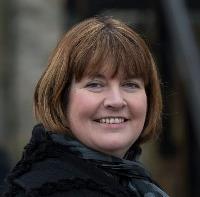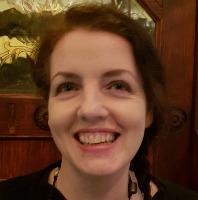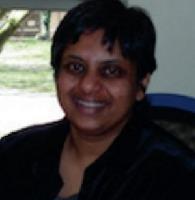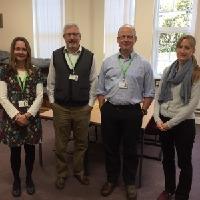Blog
Unless otherwise stated, content is shared under CC-BY-NC Licence
Libraries and the future of their USP
Pamela Tulloch is Chief Executive of the Scottish Library and Information Council
Everyone tells us we live in a digital world and to a certain extent this is true. As a librarian, I first started creating digital content in the 1990’s and looking back, what we were doing then, does look so last century now. These are the digital dark ages and yet the content which was created remains as relevant now as it was then. So much has changed in a few decades and how expect to access content has changed too.
Preserving Knowledge – Are we keeping the right things?
Neil Jefferies is Research and Development Project Manager for the University of Oxford's Bodleian Libraries Research & Learning Services
I feel that there is an increasing disconnect between the digital artifacts that we capture and the mechanisms used to create the knowledge that they embody. This contributes to some of the difficulties with preserving these born-digital materials in a way that effectively retains their meaning.
The seed for this train of thought has been my involvement in the Cultures of Knowledge project and the accompanying online resource Early Modern Letters Online (EMLO). The aim of the project is to use digital methods to reassemble and interpret the correspondence networks of the early modern period (roughly 1550-1750). This period is interesting in that it saw the emergence of a significant social network across Europe and the associated Empires, enabled by the development of postal services and increased population mobility. This resulted in an explosion of intellectual activity that laid the foundations for the Enlightenment and established patterns for scientific discourse that persist until the present day - for example, the foundation of The Royal Society and the publication of the first scientific journals.
If they can’t agree on the plug, how can they ever agree on the metadata?
Miguel Ferreira is Executive director at KEEP SOLUTIONS based in Braga in Portugal
“If they can’t agree on the plug, how can they ever agree on the metadata?”… This sentence has stuck with me for over 13 years now. It came about in the summer of 2005, when a DSpace user group meeting was about to take place in the beautiful city of Cambridge, in the UK. The meeting intended to give a voice to real-world users and to provide an opportunity for young developers such as myself to learn from the collective wisdom of all of those present.
Preserving the past: the challenge of digital archiving within a Scottish Local Authority
Lorraine Murray is Archivist at Inverclyde Council in Scotland
During my masters course where I studiedInformation Management, Digital Preservation and Archives at the Department of Information Studies (or as I knew it at the time; HATII!) at The University of Glasgow, I came to realise how useful it was to create and use digital content with the aim of making historical information and original source material more widely accessible. However, the successful curation, management and preservation of any digital object is an absolutely essential part of this process.
I’ve never met-a-data I didn’t like (or why metadata can help us learn about digital preservation)
Kristen Schuster is Lecturer in Digital Curation for the Department of Digital Humanities at King’s College London
I lecture in digital curation and exploring the relationship between curation and preservation is one of my favorite topics of discussion. I find these discussions so interesting because as a librarian I often find that, on the surface, I have a different understanding of preservation than my students. And, as a result, my examples based in museums and archives are initially at odds with their work experiences and career goals -- many of my students want to work in news broadcast agencies. The idea of long-term preservation making media accessible and usable for decades often alludes them… the news moves forward, not backwards after all! I was quite intrigued by the disconnect between my well-intentioned explanation that we create content – analog or digital – because we want to use and re-use it, and that use, and re-use help us establish narratives and understandings of events, people, places and objects. My efforts to explain file types, compression ratios and the joys of file structures fell flat and, looking back, this shouldn’t have surprised me. After all, connecting the importance of file compression to the activities (cough curation) preservation support is elusive when put in abstract terms. So now, instead of pursuing a degree in broadcast journalism to try and relate to my students’ interests, I discuss how preservation can save us the time, effort and the frustration of having to re-create valuable assets or regret the loss of content. Instead of directly discussing file types and file structures, I enthusiastically convince students that metadata and practical methods for organizing content makes it possible for everyone to participate in the curation and preservation activities.
Everyone’s a winner?!
Kasandra O’Connell is Head of the IFI Irish Film Archive
Last year I wrote a blog for World Digital Preservation Day contemplating the progress the Irish Film Institute (IFI) had made in the area of Digital Preservation; this year’s WDPD sees the IFI join the list of nominees for the DPC Digital Preservation awards in the Safeguarding the Digital Legacy category taking place in Amsterdam as part of the WDPD2018 celebrations.
The project we are nominated for, The Loopline Conservation Project, is one that we have been working on for nearly 2 years. It is our first end-to-end application of IFIscripts – our suite of open source digital preservation tools created to automate our own digital preservation activities but also adopted by a number of peer institutions internationally. Funded by the Broadcasting Authority of Ireland www.bai.ie. the project has focused on cataloguing and preserving the output of Loopline Films, one of Ireland’s most important independent production companies, run by filmmaker Se Merry Doyle. This collection provides an unparalleled record of key areas of Irish history and arts from the 1990s to the present day, documenting a transition in Irish society pre- Celtic tiger and post economic crash. In addition to material chronicling the rapid social and economic change in Ireland during the late 20th century it includes interviews with international cultural figures such as Margaret Atwood, Martin Scorsese & Maureen O’Hara. In 2017 Loopline closed its studios and transferred its holdings to the IFI Irish Film Archive.
Digital Preservation: More than the bits, it’s the organisation.
Kalpana Shankar is Head of the School of Information & Communication Studies at University College Dublin
How do you keep a data archive open and relevant for fifty years or more?
For the last four years, my colleague Professor Kristin Eschenfelder (School of Library and Information Science, University of Wisconsin-Madison, USA), and I have been asking (and trying to answer) that question, along with many other questions, as part of a research project on the sustainability of data archives. Thanks to the Digital Preservation Coalition for giving us the opportunity to talk about this project and why it matters on World Preservation Day.
Can Digital Preservation become business-as-usual?
Jonathan Tilbury is CTO and Founder of Preservica based in the UK
Digital Preservation has come a long way since the initial research activities resulted in cornerstone tools such as PRONOM, DROID, and JHOVE and the creation of the familiar OAIS reference model. The evolution of this change can be seen in the Digital Preservation Coalition itself, charting its creation, the growth in membership numbers, and the gradual move away from pure cultural heritage and academic organisations to the incorporation of different types of organisations. I’ve been there since these early days and am very excited about where the sector is headed.
Products have emerged to reflect this change. You can now choose between open source community tools and investment backed escrowed systems. These have a common core of functionality covering all the OAIS functions and growing sophistication to reflect their communities. They are supported by companies dotted around the world employing specialists in their sector. Choosing between these products depends on where your emphasis is, which functions you value most, the skill level of your team and a look at the total cost of ownership.
Consortium working - a collaborative approach to digital preservation
Sam Johnston is the County Archivist at Dorset History Centre
I think I'm stating what's known colloquially as the 'bleedin' obvious' when I say that digital preservation has presented a raft of challenges for small to medium sized archive services, most of which have undergone significant budget reductions in recent times. It's an area of work that is outside the skill-set and certainly the comfort zone of many, and in budgetary terms, it represents something that is likely to require additional funding, often very hard to secure. Therefore, a technical challenge combined with a relatively glum financial picture has meant that it has been difficult to understand how small services can begin to grapple with digital preservation. One thing I think we all acknowledge is the importance of digital preservation and that archivists should be the professionals to lead it as a clear continuation of our work with the physical records. The risk, as it appears to me at least, is that if we don't take the lead, then it will default to some other sector to pick this up and we risk becoming heritage 'time capsules' of hard copy records only.
Winning a Digital Preservation Award in 2016
James Mortlock is Digital Archives Manager at HSBC in London, UK
HSBC’s digital archive journey began back in 2011 when we first sat down to develop a set of requirements for a system that would manage and preserve our growing born digital and digitised collections. This process developed into an exciting digital preservation project that was supported by senior management. After many years of hard work and collaboration by the archives team, our internal IT colleagues and external vendors we were able to launch the HSBC Global Digital Archive system (GDA) in 2015, just in time to support HSBC’s 150th anniversary celebrations. The following year, in November 2016, the success of the project was recognised when it received the Digital Preservation Award for Most Outstanding Digital Preservation Initiative in Commerce, Industry and the Third sector.






















































































































































